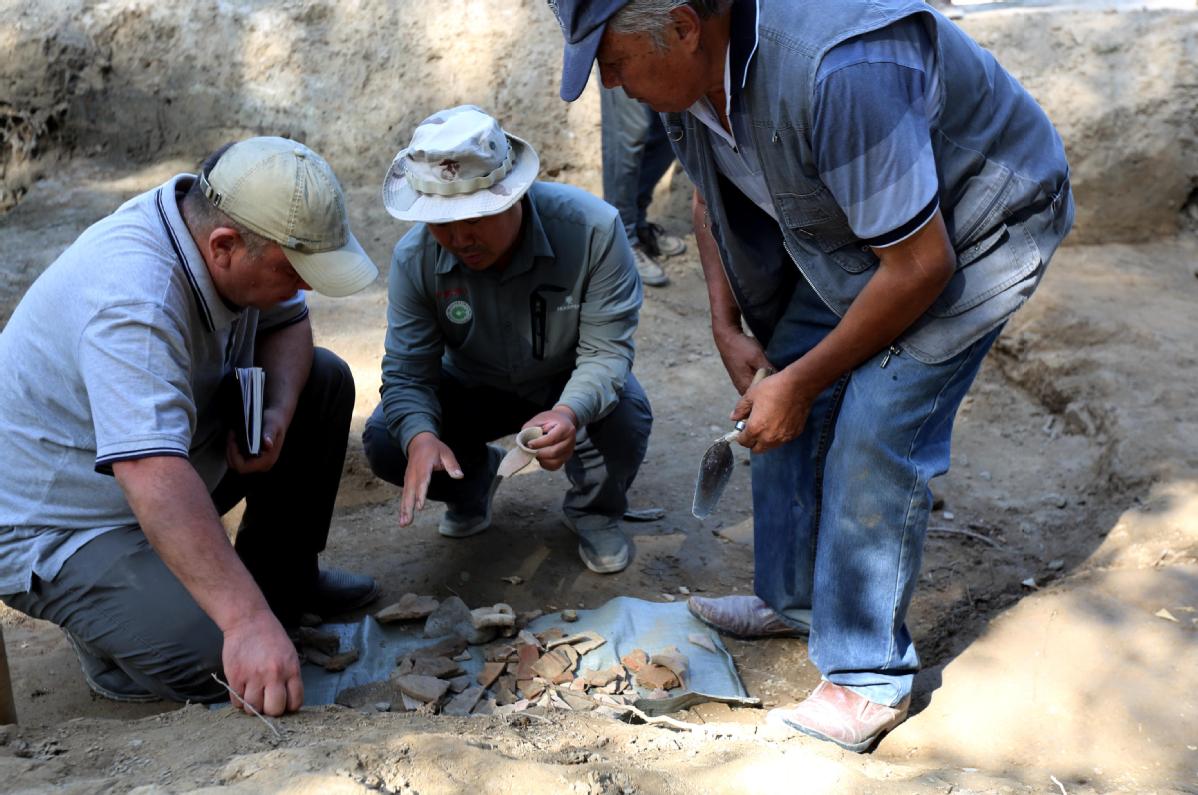Archaeologists dig deep on overseas projects
The Temple of Montu in Luxor, Egypt, has witnessed the ebb and flow of the Nile for more than 3,300 years.
Mayan rebirth
Archaeologists from China and Uzbekistan work at Mingtepa, a 2,000-year-old site in Uzbekistan. [Photo/Xinhua]
Li Xinwei, Wang's colleague at the Institute of Archaeology, has worked at Copan, an archaeological site from the Maya civilization (about 600 BC-AD 1546) in the Central American nation of Honduras, since 2015.
Working in tropical forests, he has had to frequently contend with humidity and poisonous snakes. But this has failed to deter Li from exploring Copan, which had 16 Maya rulers at its peak from the fifth to ninth centuries.
Archaeological research at Copan began in the 1890s, but Li thinks that by joining recent efforts, the Chinese have provided fresh thinking.
He said, "Even in some areas, which have been studied many times, we can discover something that has been neglected."
Li said Chinese methodologies emphasize studies of stratum-a layer of sedimentary rock or soil with consistent characteristics that distinguish it from others-and the development of architecture.
His team is working at a 3,000-square-meter courtyard that was home to a Mayan aristocrat.
Li said that in this ancient civilization it was believed that buildings had lives that needed to be reborn. Consequently, an old house would be demolished after being used for some time-even it was in good condition-and was replaced by a new one.
"We cannot demolish the surviving construction to study the foundations, so we frequently dig tunnels under it as part of our work," he said.


